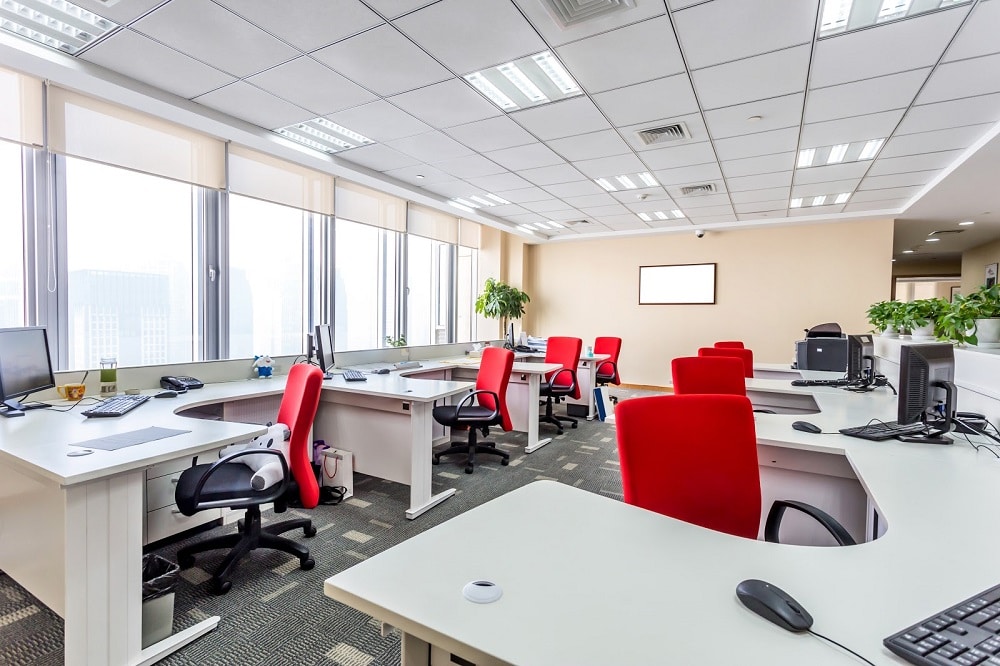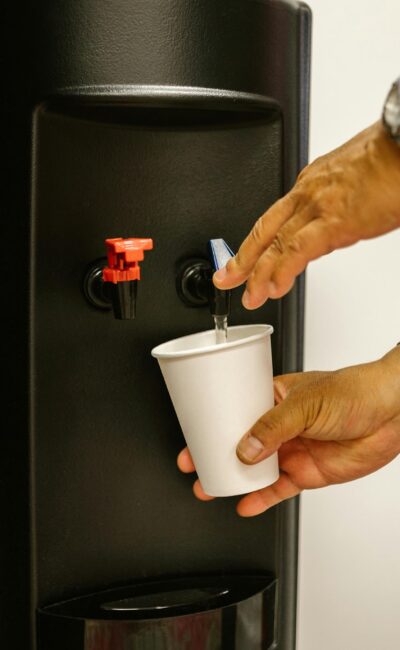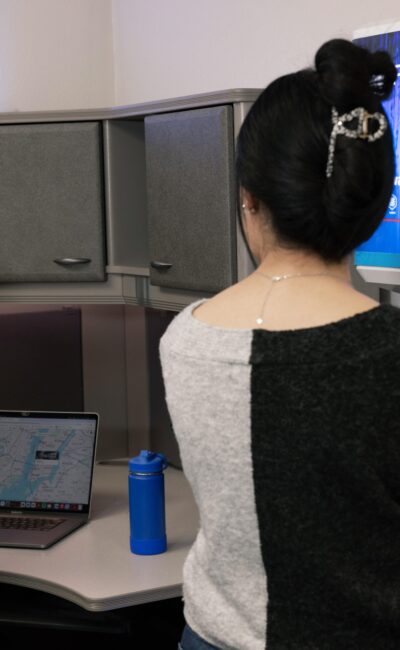Since the early months of 2020, it seems like every day brings something new in the wake of a pandemic. Companies are taking extra precautions to keep their employees and guests as safe as possible. As people begin to slowly return to their physical work spaces, the focus on reopening strategies is crucial. In addition to planning and investing in new ways to keep surfaces sanitized as much as possible, employers must be able to quickly adapt as well.
In order to alleviate concerns around reopening the office, there are several safety initiatives that can be put into place to keep the environment safer for employees to return. These involve changing the office layout, investing in resources that sanitize and provide touch-free options, and cleaning the workplace more regularly. It’s also necessary to decide how to manage office visitors, day-to-day administrative duties, and adjust to remote working as necessary.
Though each company has its own checklist of what needs to be done before employees can come back to the office, this is a good starting point when creating your own strategies for reopening the office in the best way possible.
Change the Workspace Layout
For years, the open office layout has been popular. The concept involves rows of cubicles or long desks placed close together in an attempt to improve collaboration and camaraderie among teams. However, in the age of implementing social distancing, desks need to be spaced out. Office administrators must rearrange workstations to allow for more room between employees and possibly add plastic dividers to keep people separated.
In addition to individual work spaces, meeting rooms also have to accommodate less people in limited settings. Separating chairs, reducing the number and length of meetings per day, and providing antibacterial wipes and hand sanitizer in every room are all parts of what’s required to allow people to feel safer returning to work.
Invest in Touchless Technology
Touchless technology continues to be an important part of reopening the office and has been in place for years among most industries. Voice-activated programs and movement sensors help to limit contact and conserve energy to use only when needed. Limiting contact with door handles, lighting, and other office essentials is part of the newest wave of what touchless technology can help with as people return to work.
Using individual keycards, timed lighting, and touch-free water stations are all ways employers can limit the need for contact with public surface areas. Touchless technology provides convenience as well as a more sanitary office space that will serve employers and employees now and in the future as the new normal progresses.
Improve Cleaning Standards
Many building offices have halted or limited commercial cleaning during the early months of Covid-19. Now as reopening the office is becoming more of a reality for many, these services are back in place. However, more stringent cleaning standards are necessary during the work day. These include wiping down surfaces with antibacterial wipes after using a conference room or company kitchen and limiting waste around the office.
Every person must take an active role in maintaining cleanliness in multiple ways by being thoughtful about their individual workstations as well. This means a daily wipe down of their desk, computer, mouse, phone, and anything else employees come into contact with daily. It means immediately washing dishes as soon as they’re done using them or taking them home to clean every evening.
Implement Visitor Protocols
For companies that allow in-person deliveries, clients, and other visitors, there must be a plan in place to limit the number of people in the office at one time and to limit any lines from forming.
This may involve a one in, one out setup or monitoring how many people are scheduled to come through in a day. It also requires signage that requires masks or facial coverings before entering the office.
For delivery drivers, front office managers may need to meet them in the lobby or assist them to make the delivery so there’s limited contact with the rest of the office. Additionally, limiting the number of in-person client or vendor meetings is also important, especially if they can be handled via a conference call. In the beginning stages of reopening the office, it’s best to limit personal visits until other basic protocols are already in place and proven to work.
Adjusting Day-to-Day Administrative Duties
Day-to-day administrative duties now include overseeing all newly implemented strategies to ensure they’re working and people are following them as outlined. Since each county is changing what’s required, based on the number of coronavirus cases reported, company administrators must follow mandates and ensure their staff and space is up to par with what’s necessary in order to remain open in a physical space.
The job also involves monitoring potential cases of coronavirus and/or guiding employees in how to self-monitor when to stay home for the sake of others. Being in closed spaces in a group of people causes germs to spread more quickly. When employees have symptoms of any kind, it’s best for them to work remotely.
Ensure every person has the capabilities to work from home when necessary with limited interruption to the workflow. Having a contingency plan in place if employees must return to primarily working remotely helps to keep a sense of normalcy for people and higher levels of productivity for businesses.
Adjust Employee Perks and Benefits
Employee perks of the recent past often involved in-person amenities and company-sponsored events that aren’t as feasible right now. It’s important to reassess what’s currently offered as a way to stay competitive in the workforce for both current and potential employees.
Health benefits have always topped the list for new employees, but accessibility to mental health and flexible setups have become more popular over the years. Whether it’s a gym stipend, access to affordable therapy, or other self-care funds, these are leading benefits employees look to when starting a new position in today’s modern world.
Additionally, with many employees working primarily or at least part-time from home, offering a stipend to create their own workspace or enrolling employees in a snack subscription are creative ways to give employees motivation to adjust to the new ways of how the operations will work whether the office is physically open or not.
Clear Company Communication
As with any new company initiative, it’s essential to be clear with communication among all employees, especially when there may be several changes in a short amount of time. Be specific in written communication and open up the conversation for feedback in an organized way.
Everyone is learning how to navigate reopening the office space simultaneously, which calls for patience, understanding, and ongoing communication as the keys to being successful. Define and follow through on expectations outlined by your company to ensure all employees are on the same page about what’s best for the workplace as a whole. Adapt when necessary and check in often to make sure everyone feels as best prepared as possible.
Why FloWater Should Be Part of Reopening the Office
There are several phases of the reopening process and multiple parts to each phase. An essential part of work life is access to fresh, filtered water. FloWater addresses all reopening strategies by offering a purified water station that works with all layouts, promotes touchless technology, and allows employees to maintain their well-being while at work.
First, the slim design of the FloWater Refill Station can adapt to any changing space rather than dealing with bulky water jugs or other high-maintenance filtration systems. Second, it has a one-touch refill button to limit contact with the system in order to dispense water quickly. There’s also the option for a push pedal for employees to go completely contact-free.
This limits people gathering around the water station to encourage social distancing due to its rapid refill capabilities. In under 10 seconds, the refill station dispenses purified, chilled water in and auto-replenishes to always hold seven gallons of water to be available on-demand.
Third, investing in a filtered water dispenser allows employees to stay hydrated throughout the day, which is important to maintain a healthy immune system. Employees can get their daily recommended water intake and replenish their electrolytes at the same time. As one of the system’s seven filtration levels, the electrolyte enhancement adds magnesium, sodium, calcium, and potassium to the water that’s healthier for everyone.
Navigating Your Way Through the New Normal
Part of implementing reopening strategies for the workplace requires trial and error and the ability to efficiently and effectively adjustment. Assigning specific protocols can better prepare companies when they need to adapt again. The number one goal of returning to work is keeping everyone as safe as possible. All of the extra efforts and plans make a difference in maintaining a healthy workplace when everyone contributes.
This is definitely not how anyone would’ve imagined in-office changes would go in 2020, but take advantage of the resources available that will help as you slowly reopen your workplaces and welcome employees and guests back together.




